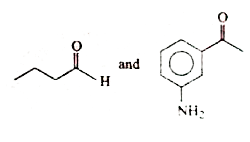Mercurous chloride turns black on adding NH4OH to it. Explain.
To explain why mercurous chloride turns black upon the addition of ammonium hydroxide (NH₄OH), we can break down the process into a series of steps:
Step 1: Identify Mercurous Chloride
Mercurous chloride is represented by the chemical formula Hg₂Cl₂. It is important to recognize that this compound contains two mercury (Hg) atoms and two chloride (Cl) ions.
Step 2: Reaction with Ammonium Hydroxide
When mercurous chloride (Hg₂Cl₂) is treated with ammonium hydroxide (NH₄OH), it undergoes a chemical reaction. Ammonium hydroxide can also be represented as ammonia (NH₃) in aqueous solution.
Step 3: Formation of Products
The reaction can be represented as follows:
Hg2Cl2+2NH3+2H2O→2Hg+HgNH2Cl+2NH4Cl
In this reaction:
- Mercurous chloride (Hg₂Cl₂) reacts with ammonia (NH₃) and water (H₂O).
- The products formed include:
- Elemental mercury (Hg), which appears as a black precipitate.
- Mercuric amidochloride (HgNH₂Cl).
- Ammonium chloride (NH₄Cl).
Step 4: Observation of Black Color
The black color observed when mercurous chloride is treated with ammonium hydroxide is primarily due to the formation of finely divided elemental mercury (Hg). This finely divided mercury has a characteristic black appearance.
Conclusion
Thus, the black coloration of mercurous chloride upon the addition of ammonium hydroxide is due to the reduction of mercurous chloride to elemental mercury and the formation of mercuric amidochloride.
---
Mercurous chloride is represented by the chemical formula Hg₂Cl₂. It is important to recognize that this compound contains two mercury (Hg) atoms and two chloride (Cl) ions.
When mercurous chloride (Hg₂Cl₂) is treated with ammonium hydroxide (NH₄OH), it undergoes a chemical reaction. Ammonium hydroxide can also be represented as ammonia (NH₃) in aqueous solution.
The reaction can be represented as follows:
Hg2Cl2+2NH3+2H2O→2Hg+HgNH2Cl+2NH4Cl
- Mercurous chloride (Hg₂Cl₂) reacts with ammonia (NH₃) and water (H₂O).
- The products formed include:
- Elemental mercury (Hg), which appears as a black precipitate.
- Mercuric amidochloride (HgNH₂Cl).
- Ammonium chloride (NH₄Cl).
The black color observed when mercurous chloride is treated with ammonium hydroxide is primarily due to the formation of finely divided elemental mercury (Hg). This finely divided mercury has a characteristic black appearance.
Thus, the black coloration of mercurous chloride upon the addition of ammonium hydroxide is due to the reduction of mercurous chloride to elemental mercury and the formation of mercuric amidochloride.
Topper's Solved these Questions
- D AND F BLOCK ELEMENTSBOOK - CENGAGE CHEMISTRY ENGLISHCHAPTER - D AND F BLOCK ELEMENTSEXERCISE - Solved Example
18 Videos
- D AND F BLOCK ELEMENTSBOOK - CENGAGE CHEMISTRY ENGLISHCHAPTER - D AND F BLOCK ELEMENTSEXERCISE - Ex 6.1 Subjective
12 Videos
- COORDINATION COMPOUNDSBOOK - CENGAGE CHEMISTRY ENGLISHCHAPTER - COORDINATION COMPOUNDSEXERCISE - Archives Subjective
18 Videos
- ELECTROCHEMISTRYBOOK - CENGAGE CHEMISTRY ENGLISHCHAPTER - ELECTROCHEMISTRYEXERCISE - Archieves Subjective
35 Videos
Similar Questions
Knowledge Check
A mixture of two organic compound gives red coloured precipitate with cuprous chloride and silver mirror on heating with Zn and NH4Cl followed by AgNO3+NH4OH solution. The mixture contains :
A B
B C
C D
D
Statement-1: Methanoic acid reduces mercuric chloride to mercurous chloride on heating while ethanoic acid does not.
and
Statement-2: Methanoic acid is stronger acid then ethanoic acid.
View SolutionMercuric chloride is converted into mercury by:
View SolutionMercuric chloride is converted into mercury by:
View SolutionA white sublimable substance, that turns black on treatment with an NH3 solution can be:
View SolutionA white ppt obtained in the anylsis of a mixture becomes black on treatment with NH4OH it may be
View SolutionAnhydrous mercurous chloride can be prepared by:
View SolutionWhy sugar turns black when added to conc. H2SO4 ?
View Solution
